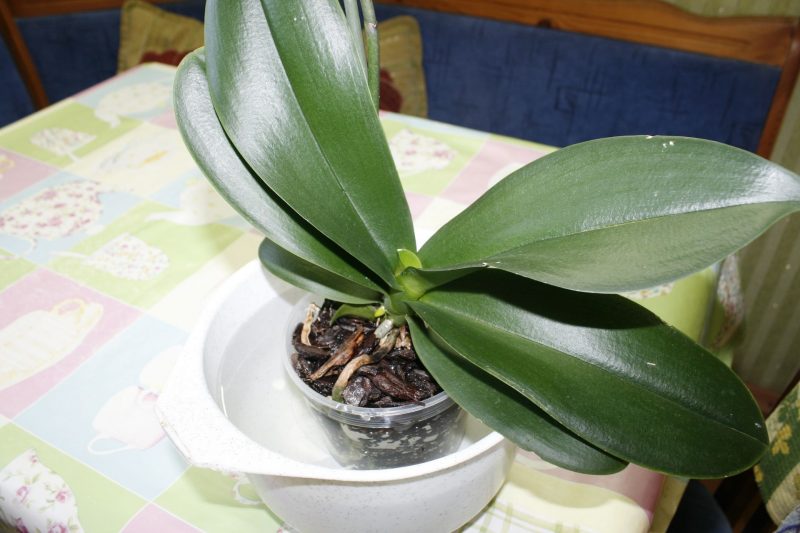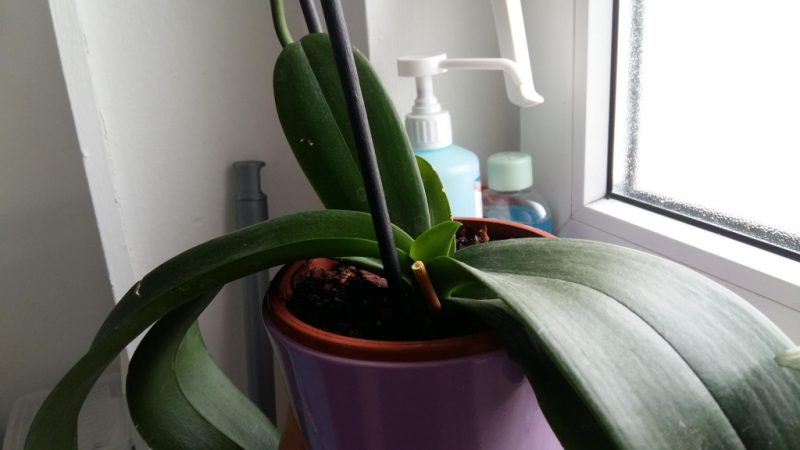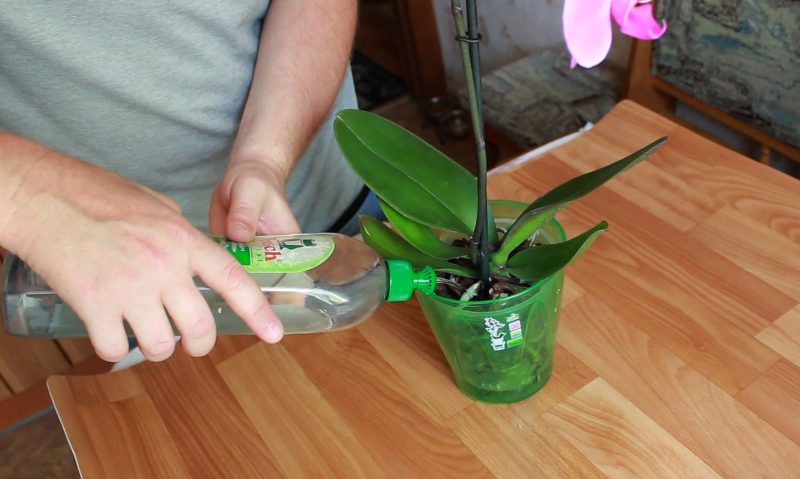How to make an orchid blossom in room conditions, and what mistakes do flower growers most often make in caring for a plant? Why does indoor orchid not want to bloom? You will find answers to these and many other questions in this article.
Material Content:
The main reasons why the orchid does not bloom
Orchids are very photophilous plants, and the main reason why they refuse to bloom is a lack of light.

- If the flower is constantly experiencing a lack of sunlight, then flowering may not occur for years. Leaves will only develop. For example, the Cymbidium orchid blooms only in very bright light, since in nature these plants grow under the open sun. For this variety, when grown indoors, it is very important to provide long daylight hours and bright lighting. But the foliage of dark green color with a lack of lighting will grow very well by the plant.
- Also, the flower may not bloom for a long time if the soil is too wet. Excess water leads to the fact that the orchid stops flowering. It is especially important to observe watering regimes when the plant is forming flower buds. If the orchid is constantly abundantly poured, then the buds, contrary to expectations, will simply dry out, the flower stalks will become dry. During flowering, orchids do not need a lot of water at all.
- Mandatory orchid requires a period of rest. To do this, in winter, lower the temperature in the room and greatly reduce watering. In order for the plant to give new peduncles, it needs a long rest. However, there are such varieties of orchids that need to lower air temperature only at night. During dormancy, orchids do not fertilize, otherwise they will not bloom at all.
Creation of ideal conditions for flowering
To stimulate flowering, first of all, an orchid needs to create ideal conditions. It is very important to choose the right place for the pot and ensure optimal care.

- There should be a lot of light, but at the same time, the orchid should not be placed in direct sunlight. On the south side of the window, they are shaded with frosted film. This rule must be observed in springtime strictly, since the orchid in the spring begins to adapt after rest to a longer daylight hours. The soft sun in the fall does not harm the flower, and it can even be rearranged under direct rays. Daylight hours for lush and regular flowering orchids should be more than 12 hours.
- The place where the pot stands should be permanent. Due to frequent permutations, the orchid may stop blooming. Rearrangement of a pot is a strong stress for a flower.
- Different varieties of this beautiful plant like different air temperatures. So, phalaenopsis prefer in summer temperatures above +25 ºС, and in winter about +15 ºС. It is very important that the daily temperature drop is not more than 5 degrees.
- Humidity in the room should be between 40% and 70%. If the air is excessively dry, the buds will begin to fall. Too dry air in winter can cause a prolonged lack of flowering in the orchid.
Stimulating orchids with fertilizers
If the orchid stubbornly refuses to bloom, it needs to be fed. Top dressing helps the plant set more buds and bloom longer. In addition, the color of the petals will be more saturated. But it is important to follow the rules for fertilizing, otherwise flowering can never wait.

- Categorically it is impossible to make top dressing immediately after transplantation.
- Fertilize the plant only during the growth period.
- Do not fertilize diseased specimens, as they may even die.
- Top dressing is applied immediately after watering.
- Fertilize orchids every two weeks.
To stimulate the flowering of orchids at home, it must be nourished with compounds that contain a lot of potassium and phosphorus.
These elements contribute to the appearance of a large number of flowers. It is also desirable that vitamins and amino acids be present in the top dressing. You can buy special fertilizer specifically for indoor orchids.
Features of watering
The intensity and frequency of watering also depends on the variety of orchids.

- Phalaenopsis loves a well-moistened soil, but they do not tolerate moisture stagnation.
- But dendrobiums need rarer watering, they are watered only after the soil has dried.
In any case, orchids are watered carefully, being careful not to overfill, because due to excess moisture, the roots can rot and buds dry.
Two watering options are allowed: traditionally top and bottom, when the pot is placed in a container of water. When watering from above, they simply moisten the soil, and the liquid flowing into the sump is immediately drained. When immersed in water, the pot is kept in a container for about 10 minutes, so that moisture permeates the soil.
Orchids are watered with well-defended lukewarm water.
The secrets of constant flowering orchids
If an orchid does not bloom at home, what should I do in this case? Experienced gardeners have their own secrets that will help make the plant bloom more often and longer.

- First of all, flowering largely depends on the age of the orchid. Young plants may not give peduncle for a long time, even if all the rules of cultivation are observed.
- You can not rearrange the plant! Orchids are very sensitive to the source of light, and in a new place can simply stop blooming. And vice versa, if you immediately choose a suitable place where the flower is good, it will bloom for a long time.
- Orchids really do not like to be disturbed, so you need to grow these plants in transparent pots, through which the roots are visible. The root system must be protected from touch.
- Orchids do not tolerate overheating, so you can’t put the pots in rooms that are too hot or near heating appliances.In the spring and summer, flower growers are advised to take the pots out into the air, where orchids will bloom all the time.
To correct the decline in flowering in the winter, you can use the additional illumination. Many gardeners light orchids even at night. There are special phytolamps that do not dry the air.
Another secret that will make the orchid blossom: as soon as the flower falls off, watering should be stopped for a month. Watering only after the soil has dried. This requirement must be met at any time of the year and for orchids of any age.












